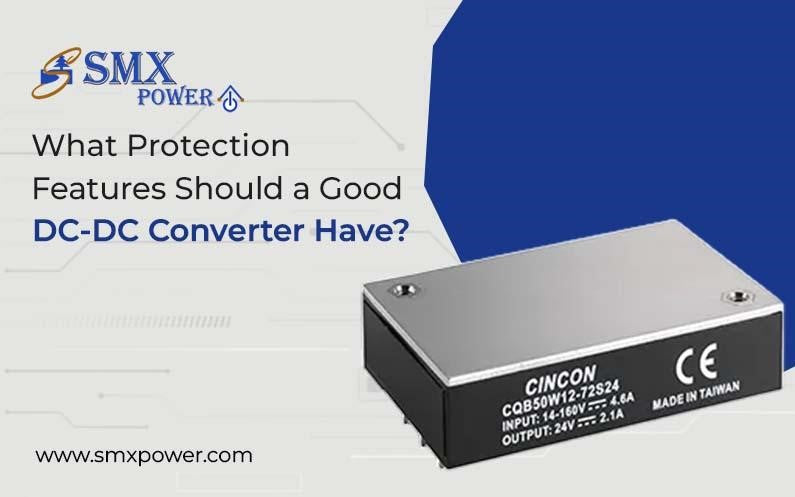When it comes to power supply products, DC-DC converters are a staple in ensuring stable and efficient performance. But there's more to these devices than just converting voltage. The real value lies in their protective features. DC-DC converters are your essential safeguard against common electrical hazards like power surges, overcurrent, and overheating. Before you make your selection, it’s important to understand the protection features that set a good converter apart from the rest.
Overvoltage Protection (OVP)
As far as must-have features are concerned, Overvoltage Protection (OVP) is top of the list, literally. It’s the first safeguard protecting critical but delicate electronic components. The last thing you want is to hook your gadgets up to a power source only to watch them get fried by a spike in the voltage output.
Overvoltage Protection regulates the output voltage to keep it within safety limits. It works by switching off the converter the minute it detects voltage outside a predetermined threshold.
Overcurrent Protection (OCP)
Likewise, Overcurrent Protection (OCP) is another must-have safety feature. The components of electronic devices are designed to operate within a specific current threshold. A short circuit or overload can be costly. That’s why it's recommended to have current-limiting devices to suppress power in the event of a problem.
Overcurrent Protection (OCP) keeps your gadgets safe by first limiting the current output and secondly by shutting down the converter. That way, the connected load continues to function until an overload occurs.
Thermal Protection
It’s common knowledge that heat can degrade and destroy internal components. Electronics become less durable over time because of heat buildup. Thermal protection is a crucial safeguard against malfunctions and failures.
The DC-DC converter can regulate the output and shut down to keep electronics from overheating. For devices that are prone to overheating or run complex tasks, like gaming PCs, this feature is a no-brainer.
Short Circuit Protection
When electrical current flows through an unintended or shorter pathway, it wreaks havoc on internal electronic components. As a rule, you are encouraged to have DC-DC power converters that have short circuit protection.
Short circuit protection works by isolating and protecting electronic devices in the event of a short circuit. The converter will either switch to a safe operating mode or shut down completely.
Reverse Polarity Protection
An unexpected reverse in terminals (from positive to negative) can degrade printed circuit boards. This damage often occurs with DIY-built electronic components that are connected to power in the wrong direction.
Reverse polarity protection is a safeguard against such accidents. It prevents damage by breaking the circuit when the input voltage connection is reversed. The DC-DC converter will disable current flow or absorb the reverse current.
Under Voltage Lockout (UVLO)
Every electronic device has a specific supply output threshold it needs to operate. Anything outside these limits can make the devices erratic and malfunction. A DC-DC converter can prevent your devices from operating in unsafe conditions.
The Under Voltage Lockout feature monitors the input voltage and blocks the output to prevent damage. It will avoid issues related to low voltage consumption, like battery discharge.
Surge Protection
A voltage spike can be unpredictable. Internal power fluctuation or external factors like lightning strikes can cause a power surge. A reliable DC-DC converter should be able to divert these excess voltages away to preserve the integrity of internal components.
Surge protection is a feature included to handle short and high-voltage transients. The converter will perform this safeguard while keeping your electronic components performing as usual.
Isolation Features
It’s clear by now that a lot of what DC-DC power supplies do is to isolate your electronics from dangerous output. A reliable converter will provide electrical separation where ground loops is a recurring issue. This isolation between the input and output promotes system reliability and safety.
In Conclusion
Choosing the right DC-DC converter isn't just about efficiency or size—it’s about ensuring your electronics are well-protected. With the right protection features in place, you can prevent costly damage and extend the life of your devices. Whether you’re upgrading your current system or building something new, investing in a high-quality converter with essential safety features is crucial. Choose SMX Power for reliable, well-protected DC-DC converters that will keep your devices running smoothly—no matter the conditions.

